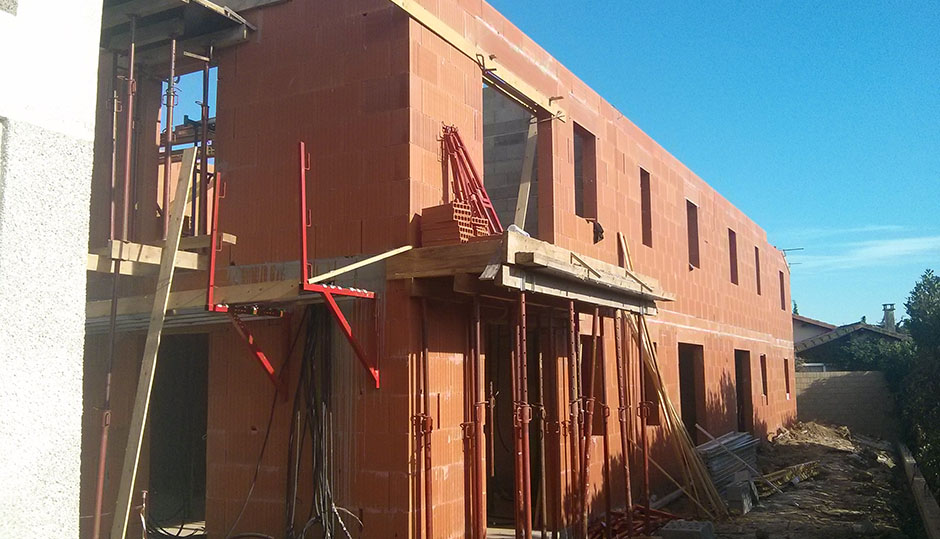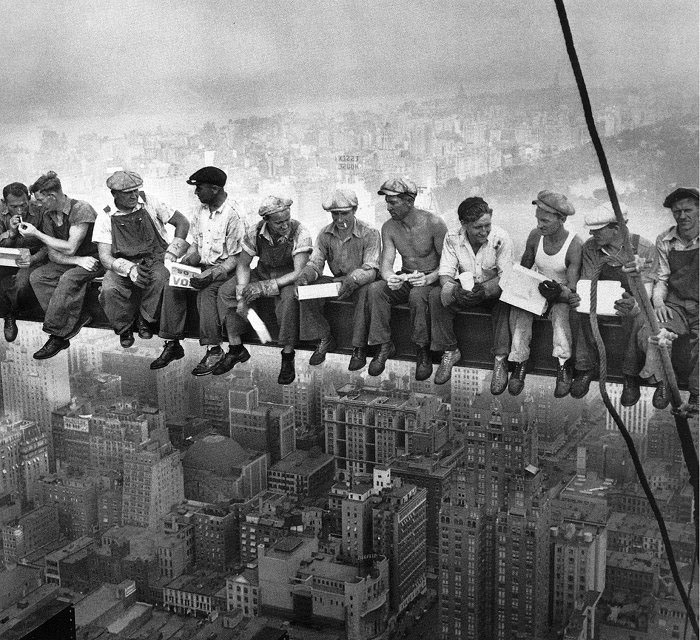Cinquième et dernier ouvrage sur la promotion immobilière que je vous fais partager, Powerhouse Principles de Jorge Perez est sans conteste le meilleur, et de loin. Là où ses confrères se dispersaient parfois en digressions sur leurs vies personnelles (Sam Zell, Eli Broad), ou bien avaient pour focus l’investissement immobilier plus que le métier d’opérateur immobilier (16 conseils pour mieux investir dans l’immobilier), Jorge Perez détaille humblement les recettes qui ont fait de lui l’un des meilleurs promoteurs immobiliers américains.
Surnommé le « Donald Trump des tropiques » car il a fait l’essentiel de sa carrière en Floride et en particulier à Miami, Jorge Perez est en particulier connu pour ses résidences luxueuses de dizaines de logements en bord de mer que l’on appelle « condominiums » ou « condos » aux Etats-Unis. Ayant vécu 1 an à Miami, ce livre a d’autant plus de résonance pour moi, car je connais certains de ses immeubles, et aussi parce que c’est la ville où j’ai rencontré Damien Truchard, l’un des cofondateurs de Lymo, qui lui y a vécu 3 ans et demi. Nous connaissons donc bien la ville.
Mais surtout, la valeur de ce livre réside dans les dizaines d’exemples pratiques et de bons conseils qui y sont donnés. Il y a tellement de passages intéressants que j’ai dû séparer cet article en 2 parties. Nous verrons aujourd’hui les conseils de Jorge Perez sur les aspects stratégie, organisation et communication du promoteur, puis nous aborderons dans un prochain article ce qui a fait le succès de Jorge Perez : le marketing et la vente. Bonne lecture !
Note : je ne traduis pas les citations originales, pour cela Google Translate fait un excellent travail.
Spécialisation
You have to become an expert in the area that you are going to be functioning in. If you decide to do affordable housing, like I did when I started, you better know all the city programs, all the city financing, all the federal and state programs, all the federal and state financing that is available to you in order to make that project happen.
Once you pick whatever the investment is, stick to it. It can be affordable housing. It might be buying a building and rehabbing it. It might be through strong management—reducing operating costs and increasing income to increase the net revenues, and then selling it for more—stick to it. It doesn’t matter. Whatever the plan is, stick to it. Don’t switch in the middle of it all. Don’t look over at something else and say, “Oooh, that looks good. Let me try that.” Stick to your plan. Make it a reality. If you do that, you will be successful.
J’ai placé la spécialisation en premier c’est un élément que l’on retrouve dans absolument tous les commentaires de promoteurs. Je vous confirme l’expérimenter personnellement au quotidien : ce que je fais aujourd’hui dans l’immobilier résidentiel en tant que promoteur avec Lymo est très différent de mon travail dans l’immobilier commercial lorsque je travaillais chez Unibail-Rodamco, alors qu’il s’agit d’immobilier dans les 2 cas. Donc ce que je retiens de tous ces ouvrages : trouver une niche, l’exploiter au maximum pour en devenir spécialiste, en déjouer les pièges au fur et à mesure, et distancer ses concurrents non-spécialistes sur le segment grâce à un produit supérieur (meilleure qualité, coût plus bas ou les deux).
Sur les clés de sa réussite
I believe that getting rich at anything takes about 25 percent luck, 25 percent brains, and 50 percent hard work. […] Thomas Edison, the great inventor, said, “Genius is one percent inspiration and ninety-nine percent perspiration.” I really believe that.
Une remarque qui revient souvent, et que l’on a tous expérimenté : ce ne sont bien souvent pas les plus doués qui réussissent dans un domaine particulier, mais ceux qui travaillent le plus.
Someone once said, “If you love what you do, it’s never work.” I don’t know about that. What I do is tremendously hard work. But I am totally, unwaveringly, and absolutely dedicated to it. If you don’t feel that kind of passion for what you do, you should do something else.
Pour réussir, il faut évidemment travailler beaucoup, mais il semble difficile d’arriver à être parmi les tous meilleurs si ce que vous faites n’est pas votre passion, car vous serez toujours dépassés par ceux pour qui c’est le cas.
So I started to read, read, read, read. And the more you read, the more questions you have, the more you go to experts to ask them to explain and give answers to the questions you have. And many times, the experts are in the agencies.
Encore une remarque qui revient dans tous les livres que j’ai lus. Cela me rappelle la citation de Charles Munger, l’associé de Warren Buffet : « In my whole life, I have known no wise people (over a broad subject matter area) who didn’t read all the time – none, zero. You’d be amazed at how much Warren reads – at how much I read. My children laugh at me. They think I’m a book with a couple of legs sticking out. »
Stratégies Immobilières
PASSIVE OR ACTIVE INVESTMENTS. A passive investment means you’re going to find something that with very little involvement on your part will make you money. For example, you will find gaps in the market in which you can get a house, and by just doing a paint job, or just a few improvements here and there, you can remarket it and make money. Other gaps in the market are ones in which you can hold on to a property because you know there’s a market trend going toward your piece of land, because the development path is going there, and in a year you’ll make money. Another passive investment is when you buy an office and get someone to manage it well for you. You get an architect to maybe make a few fixes. But you’re fairly passive and you can do it without it being your full-time job. Then there’s the active investment, in which you’re going to do work. You’re going to rehab it. You’re going to learn of a program and you’re going to make the application for government subsidies, and you yourself are going to be the reason for the creation of value. The expectations of a passive investor are typically much lower than the expectations of an active investor. I do a lot of things in which I’m an active investor. It’s hard work, but I make a lot more money. However, that doesn’t stop me from being a passive investor in many other deals.
Now, if I make a passive investment and I buy a building at $100 because I think it’s a great deal, the market is going that way, and so forth, I would never in a million years expect to put 20 percent down and make a 200 percent return. Forget about 300 percent. In a passive investment it’s simply not going to happen. Typically, when you’re looking at investments that are passive you look at an internal rate of return (IRR) in the 15 to 20 percent range.
As a passive investor you can pick good real estate people and friends of yours who know what they’re doing and get IRRs that are much better than the IRRs you would get from a certificate of deposit, which are around 5 percent at the present time. Returns are always a reflection of the level of risk and the amount of work you put in.
Jorge Perez aborde un première différence classique dans la façon d’aborder l’immobilier : la gestion « passive » et la gestion « active ». La gestion passive consiste à confier son argent à des tiers qui vont placer votre argent dans l’immobilier (le crowdfunding immobilier en est un exemple). La gestion active consiste à réaliser des opérations en direct (comme le promoteur Lymo par exemple). Schématiquement, plus vous vous impliquez, plus vous gagnerez d’argent, ce qui est très logique. Ce qui est intéressant, c’est que Jorge Perez donne des exemples : en gestion passive, il faut viser 15 à 20% de rentabilité par an, alors qu’en gestion active, on peut doubler ou tripler sa mise.
MANAGEMENT OR DEVELOPMENT You also have to decide if your goal is to hold a piece of property and manage it, or develop it and sell it. Which is better? It’s up to you. My partner, Steve Ross, and I always have this discussion. He’s much more of a keeper. I’m much more of a seller. He believes that in the long term by keeping, for example, apartment rentals, you maximize value. I think I maximize value by selling in hot periods. Neither one is wrong. It’s just the way you want to make your money. His way, you collect rents that more than pay the mortgage and bills and you’re always making some money. For years and years. The other way, you buy it, fix it up or build it from scratch, and sell it as soon as you can for as much as you can. Then you can take the profits and build an even bigger project, or more than one project. And so forth and so forth
The big difference is, if you’re going to hold on to a house or a building and rent it out, you’re going to have to maintain it, collect rents, pay the bills, do the bookkeeping, and so on. In other words, you’re going to have to manage it. You can do it all yourself or hire someone to do all or part of it for you, but the bottom line is it has to be managed. It won’t just run itself. That requires work over the long run, while providing a steady income. Selling fast may not give you as much money as you might gain over the long haul, but it ends the investment of time in a project, and it gives you an immediate influx of cash you can use for other things.
Jorge Perez rappelle ici une question que les promoteurs se posent parfois : vaut-il mieux vendre une projet que l’on vient de construire (et encaisser le cash des ventes) ou vaut-il mieux garder en patrimoine le bien et le louer (et donc encaisser les loyers sur le long terme). C’est une question que nous nous posons également chez Lymo. Jorge Perez nous apprend qu’il n’y a pas de réponse toute faite, cela dépend des perspectives et envies de chaque promoteur.
Building your plan 1. Do the research. 2. Find the property. 3. Find the money. No matter what area of real estate you go into, it will still require a plan.
The plan comes before the property. Always.
Une bonne stratégie immobilière, c’est d’abord identifier des déséquilibres dans le marché, c’est à dire des biens immobiliers que les clients veulent mais qu’ils n’arrivent pas à trouver, et ensuite seulement identifier des terrains. Cela parait logique, mais nombre de promoteurs se ruent sur les terrains sans faire au préalable d’analyse précise du marché. Au risque de se retrouver sans acquéreur une fois le projet construit.
Never be afraid to ask. Learn from others. If somebody calls you up and says, “I think you’re the best and I’d really like to know how you do certain things,” it’s flattering. If people see that you’re well intentioned and you’re going to get somewhere they will share with you. People like helping people. People like to tell you why they are good. People like building relationships.
And when we see a downturn, we start finding new areas where there are still niches—affordable housing again; rentals; investments; buying some product or some land that now has been corrected in value; or locational changes.
Encore un raisonnement de bon sens : ne jamais avoir peur de demander à ses confrères leurs méthodes. Nous faisons cela avec Bouygues Immobilier, notre actionnaire minoritaire, ce qui nous permet de nous développer plus rapidement et avec plus de sécurité.
Sur la façon de communiquer (avec son banquier en particulier)
Always cater your presentation to the recipient. What does he like? Does he like great wine and want me to take him out to dinner? I’m going to do that. What is going to make that loan get approved? That whole presentation has to be geared to the person you’re making it to. Don’t do your presentations the same for everybody, because everybody is not the same.
So for each individual we set up a presentation that highlights the most important information for them. Basically, the most important part of the presentation is still your pro forma. You have to have numbers that are very easy to follow. “This is what we’re spending here. This is what we’re spending there.” So, as opposed to the people who do extensive internal rate of return calculations and say they take up to five years and they do this and they do that, we like to have what I call my single-page pro forma—the one-pager. It basically, in a very simple form, says: Here’s the sales price—there will be two hundred units with an average size of one thousand square feet and a target sales price of $400 per square foot; here are the other revenues—parking revenues, commercial revenues if you have commercial space, total revenues; and, very simply, a cost breakdown—architect, construction, land, engineer, lawyer, sales, marketing, and so forth. We’ll break down the costs and the person will be able to see that the bottom line is profits.
Everything will be in great detail, but you’ve got to make sure—particularly when you’re making your presentation to decision makers who have very little time—that you hit them with the one-page pro forma. The other really important thing is a picture of the project. A picture is worth a thousand words.
The final part of the presentation is the market analysis. There’s two parts, and they consist of exactly what you did when you were finding the property. You include the macro ones that tell them that your area is growing like crazy and these are the many households that will be in our universe and the money that they make. And you include the microanalysis, which tells them why you’re going to do well, what the competition is doing, what they look like, and the price they’re selling for per square foot.
The number-one thing in securing a loan is to have a good product. Number two is to have a great presentation. Number three is to have relationships. Even with all of those, you have to have the passion and the salesmanship.







Trump, un mammouth agréable à regarder !